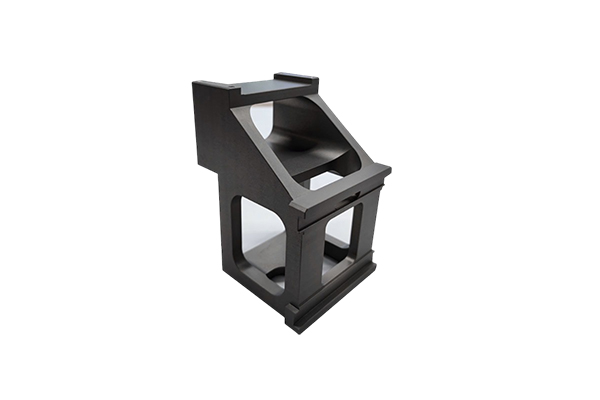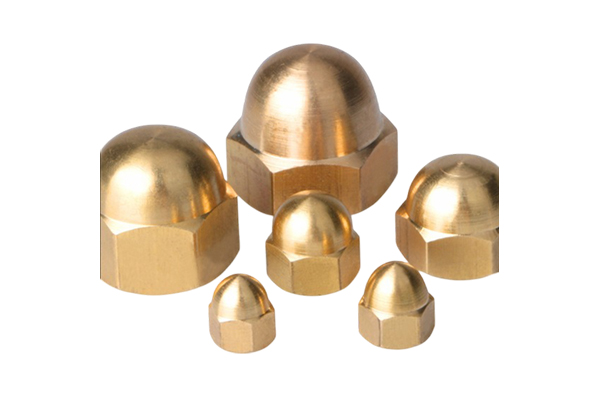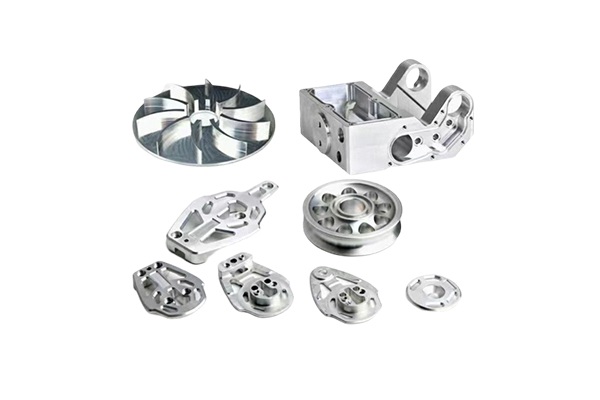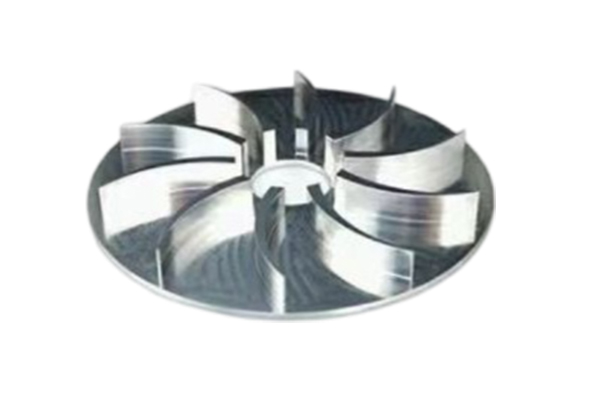How do aerospace hinge link parts maintain high reliability in extreme environments?
Release Time : 2025-07-28
In aerospace engineering, equipment must be able to operate stably and for a long time in extreme environments. As one of the key components, aerospace hinge link parts play an important role in ensuring the flexibility and stability of spacecraft structures. In order to maintain high reliability under extreme conditions such as extremely low temperature, strong radiation and vacuum, aerospace hinge link parts adopt a variety of advanced design and technical means.
1. Material selection and processing
The selection of materials is the primary factor that determines the reliability of aerospace hinge link parts. Usually, these connectors are made of high-strength, lightweight alloy materials such as titanium alloy, aluminum alloy or high-temperature alloy. These materials not only have excellent mechanical properties, but also have good corrosion resistance and fatigue resistance. In addition, surface treatment technology is also crucial. For example, through electroplating, anodizing or coating treatment, the wear resistance and oxidation resistance of the material can be further enhanced. This multi-level protection measure enables hinge link parts to work stably and for a long time in extreme environments.
2. Precision manufacturing process
Precision manufacturing process is the key to ensure the high precision and consistency of aerospace hinge link parts. Modern manufacturing technologies such as numerical control machining (CNC), laser cutting and 3D printing are widely used in the production process to ensure that each component meets extremely high tolerance requirements. Especially for the rotating parts in hinge link parts, micron-level precision control can significantly reduce friction and wear, thereby extending service life. In addition, precision assembly technology is also an indispensable part to ensure that the fit between the components is tight and gapless to avoid loosening or failure caused by vibration or impact.
3. Redundant design and fault prevention
In order to cope with potential risks in extreme environments, aerospace hinge link parts usually adopt redundant design to improve the reliability of the system. For example, multiple independent support points or backup locking mechanisms are set at key parts, so that even if a part fails, other parts can continue to maintain normal functions. In addition, intelligent sensors and monitoring systems are also integrated into hinge link parts to monitor their working status in real time, and issue alarms or automatically take corrective measures when abnormalities occur. This proactive fault prevention mechanism greatly improves the overall safety of the equipment.
4. Environmental adaptability testing and verification
Before actual application, aerospace hinge link parts must undergo rigorous environmental adaptability testing and verification. These tests include, but are not limited to, simulation experiments under multiple extreme conditions such as low temperature, high temperature, vacuum, radiation and vibration. For example, in low temperature testing, hinge link parts need to be operated in a liquid nitrogen environment for multiple cycles to test their performance under extremely cold conditions; while in radiation testing, their resistance to high-energy particles is evaluated. Through these comprehensive tests, manufacturers can ensure that their products can maintain high reliability in real space environments.
5. Application of lubrication and sealing technology
In extreme environments, traditional lubricants often cannot meet the requirements of use. Therefore, aerospace hinge link parts usually use specially formulated lubricants or self-lubricating materials, such as solid lubricating films or nano-scale lubricating particles. These lubricants can not only maintain a stable lubrication effect over a wide temperature range, but also effectively prevent dust and tiny particles from entering the joint. At the same time, efficient sealing technology is also essential, which can prevent the intrusion of external contaminants and prevent the leakage of internal lubricants, ensuring that hinge link parts can still operate smoothly in harsh environments.
6. Modular design and maintainability
Considering the complexity and unpredictability of space missions, modular design has become an effective way to improve the reliability and maintainability of aerospace hinge link parts. By breaking down the complex hinge system into several independent functional modules, not only can the production and assembly process be simplified, but also the damaged parts can be quickly replaced when problems occur without replacing the entire device. In addition, modular design also facilitates subsequent upgrades and modifications, allowing the equipment to adapt to changing mission requirements.
In summary, aerospace hinge link parts ensure high reliability in extreme environments through a variety of means such as material selection and processing, precision manufacturing processes, redundant design and fault prevention, environmental adaptability testing and verification, application of lubrication and sealing technology, modular design and maintainability. Whether facing harsh space conditions or complex ground simulation experiments, these advanced technologies and design concepts provide solid protection for aerospace hinge link parts.
1. Material selection and processing
The selection of materials is the primary factor that determines the reliability of aerospace hinge link parts. Usually, these connectors are made of high-strength, lightweight alloy materials such as titanium alloy, aluminum alloy or high-temperature alloy. These materials not only have excellent mechanical properties, but also have good corrosion resistance and fatigue resistance. In addition, surface treatment technology is also crucial. For example, through electroplating, anodizing or coating treatment, the wear resistance and oxidation resistance of the material can be further enhanced. This multi-level protection measure enables hinge link parts to work stably and for a long time in extreme environments.
2. Precision manufacturing process
Precision manufacturing process is the key to ensure the high precision and consistency of aerospace hinge link parts. Modern manufacturing technologies such as numerical control machining (CNC), laser cutting and 3D printing are widely used in the production process to ensure that each component meets extremely high tolerance requirements. Especially for the rotating parts in hinge link parts, micron-level precision control can significantly reduce friction and wear, thereby extending service life. In addition, precision assembly technology is also an indispensable part to ensure that the fit between the components is tight and gapless to avoid loosening or failure caused by vibration or impact.
3. Redundant design and fault prevention
In order to cope with potential risks in extreme environments, aerospace hinge link parts usually adopt redundant design to improve the reliability of the system. For example, multiple independent support points or backup locking mechanisms are set at key parts, so that even if a part fails, other parts can continue to maintain normal functions. In addition, intelligent sensors and monitoring systems are also integrated into hinge link parts to monitor their working status in real time, and issue alarms or automatically take corrective measures when abnormalities occur. This proactive fault prevention mechanism greatly improves the overall safety of the equipment.
4. Environmental adaptability testing and verification
Before actual application, aerospace hinge link parts must undergo rigorous environmental adaptability testing and verification. These tests include, but are not limited to, simulation experiments under multiple extreme conditions such as low temperature, high temperature, vacuum, radiation and vibration. For example, in low temperature testing, hinge link parts need to be operated in a liquid nitrogen environment for multiple cycles to test their performance under extremely cold conditions; while in radiation testing, their resistance to high-energy particles is evaluated. Through these comprehensive tests, manufacturers can ensure that their products can maintain high reliability in real space environments.
5. Application of lubrication and sealing technology
In extreme environments, traditional lubricants often cannot meet the requirements of use. Therefore, aerospace hinge link parts usually use specially formulated lubricants or self-lubricating materials, such as solid lubricating films or nano-scale lubricating particles. These lubricants can not only maintain a stable lubrication effect over a wide temperature range, but also effectively prevent dust and tiny particles from entering the joint. At the same time, efficient sealing technology is also essential, which can prevent the intrusion of external contaminants and prevent the leakage of internal lubricants, ensuring that hinge link parts can still operate smoothly in harsh environments.
6. Modular design and maintainability
Considering the complexity and unpredictability of space missions, modular design has become an effective way to improve the reliability and maintainability of aerospace hinge link parts. By breaking down the complex hinge system into several independent functional modules, not only can the production and assembly process be simplified, but also the damaged parts can be quickly replaced when problems occur without replacing the entire device. In addition, modular design also facilitates subsequent upgrades and modifications, allowing the equipment to adapt to changing mission requirements.
In summary, aerospace hinge link parts ensure high reliability in extreme environments through a variety of means such as material selection and processing, precision manufacturing processes, redundant design and fault prevention, environmental adaptability testing and verification, application of lubrication and sealing technology, modular design and maintainability. Whether facing harsh space conditions or complex ground simulation experiments, these advanced technologies and design concepts provide solid protection for aerospace hinge link parts.







